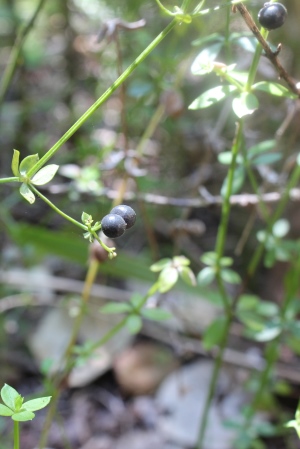
Copyright by: James J. Lange, 18 March 2015
In habitat, Virginia Key, Florida
General Landscape Uses:
Primarily recommended for natural landscapes and habitat restorations.
Availability:
Grown by enthusiasts.
Description: Small herb.
Dimensions: About 4-8 inches in height, usually creeping along the ground and forming small open patches.
Growth Rate: Fast.
Range:
Southeastern United States and the mid-Atlantic west to Texas and south to the Monroe County Keys; northern Bahamas. Very rare or extirpated in the Monroe County Keys; collected on Key Largo in 1934 and on Big Pine Key in 1951.
 Map of select IRC data from peninsular Florida.
Map of select IRC data from peninsular Florida.
 Map of suggested ZIP codes from South Florida north to Jacksonville, Gainesville, and Cedar Key.
Map of suggested ZIP codes from South Florida north to Jacksonville, Gainesville, and Cedar Key.
 Map of ZIP codes with habitat recommendations from the Monroe County Keys north to Martin and Charlotte counties.
Habitats:
Map of ZIP codes with habitat recommendations from the Monroe County Keys north to Martin and Charlotte counties.
Habitats: Moist forests and pinelands.
Soils: Moist, well-drained sandy or limestone soils, with humusy top layer.
Nutritional Requirements: Moderate; can grow in nutrient poor soils, but needs some organic content to thrive.
Salt Water Tolerance: Low; does not tolerate long-term flooding by salt or brackish water.
Salt Wind Tolerance: Moderate; grows near salt water, but is protected from direct salt spray by other vegetation.
Drought Tolerance: Low; requires moist to wet soils and is intolerant of long periods of drought.
Light Requirements: Light shade.
Flower Color: White.
Flower Characteristics: Inconspicuous.
Flowering Season: Spring-summer.
Fruit: Purple berry.
Horticultural Notes: Can be grown from seed.